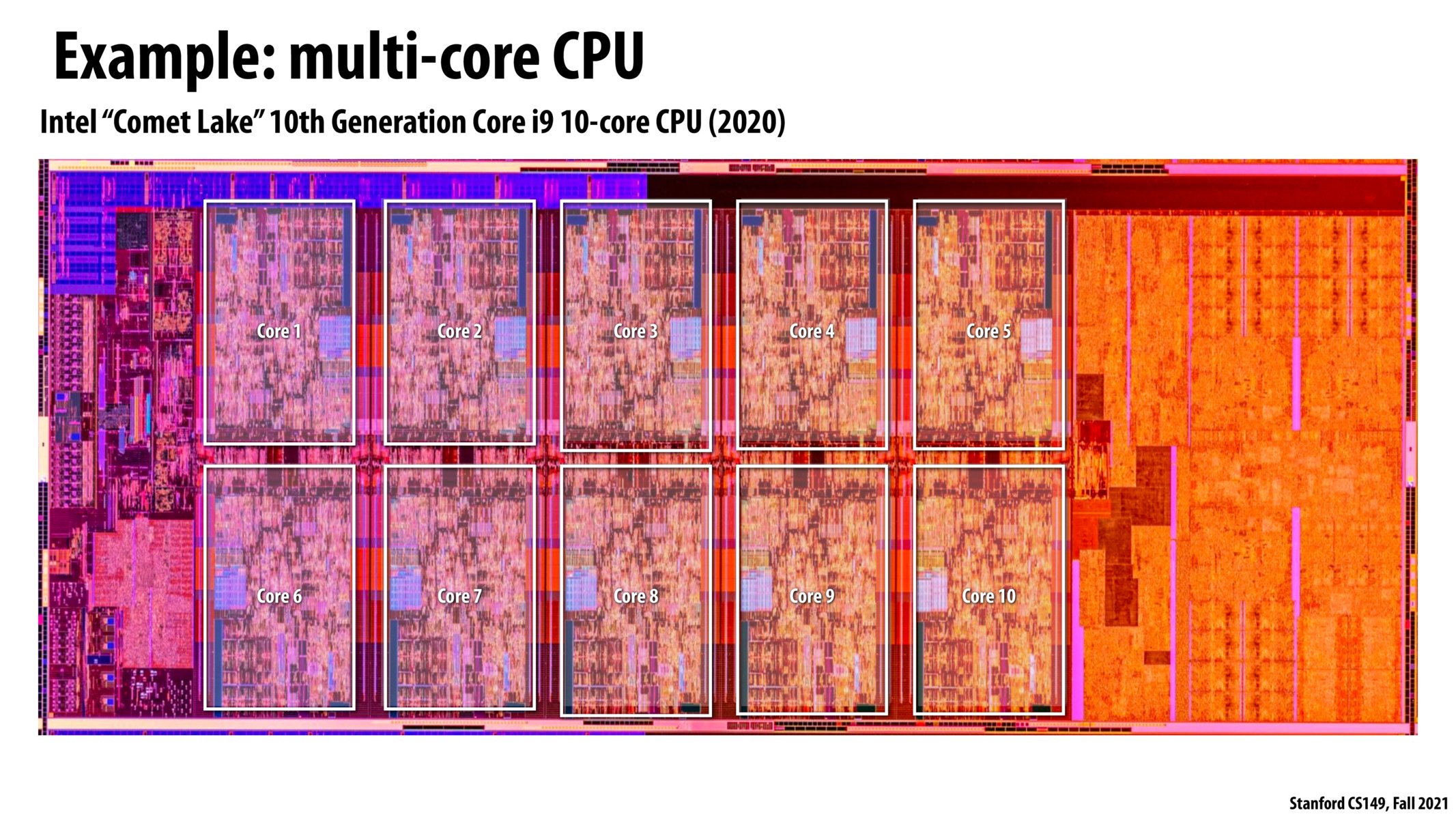


What does the heatmap overlayed on this image indicate? I think that the same coloring scheme has been used on numerous chip diagrams in this class, but I'm not entirely sure whether it represents heat, utilization, or something else entirely.

This also relates to the transistor slides, but a thing that interests me is trying to quantify increasing error rates as we shove both more transistors and cores into CPUs. This paper from Google is (deliberately) light on numbers and low on blame, but they suggest that there has been a cost to the increasing levels of parallelism, and they're having to do quite a lot more consumer-side testing of CPUs than they used to, as individual cores fail in "mercurial" ways: https://sigops.org/s/conferences/hotos/2021/papers/hotos21-s01-hochschild.pdf. Some of the solutions they suggest (for applications that need to be error-free) defeat the very point of parallelism, requiring more redundancy to check computations.

@ghostcow I don't think the coloring represents either heat or utilization. Utilization will be same for a core which is not the case above, and heating should be concentrated around the core processors but the above diagram seems to have the warm coloring concentrated on the right. The coloring probably doesn't represent anything is just there for effects.

@aman0456 Given the consistency of the coloring within each core and the other sections I feel like it may represent of the functions of various parts of CPU (ie: one color maps to communication, another to basic math) but it still seems to be largely for style to me.
Please log in to leave a comment.
I got slightly confused on the connection in lecture from the last slide to this. Is it essentially because of us hitting that wall, we need to utilize parallelism on multiple cores? If we didn't have parallelism, we still would have multiple cores, no? It checks out, but I wanted to triple check my understanding.